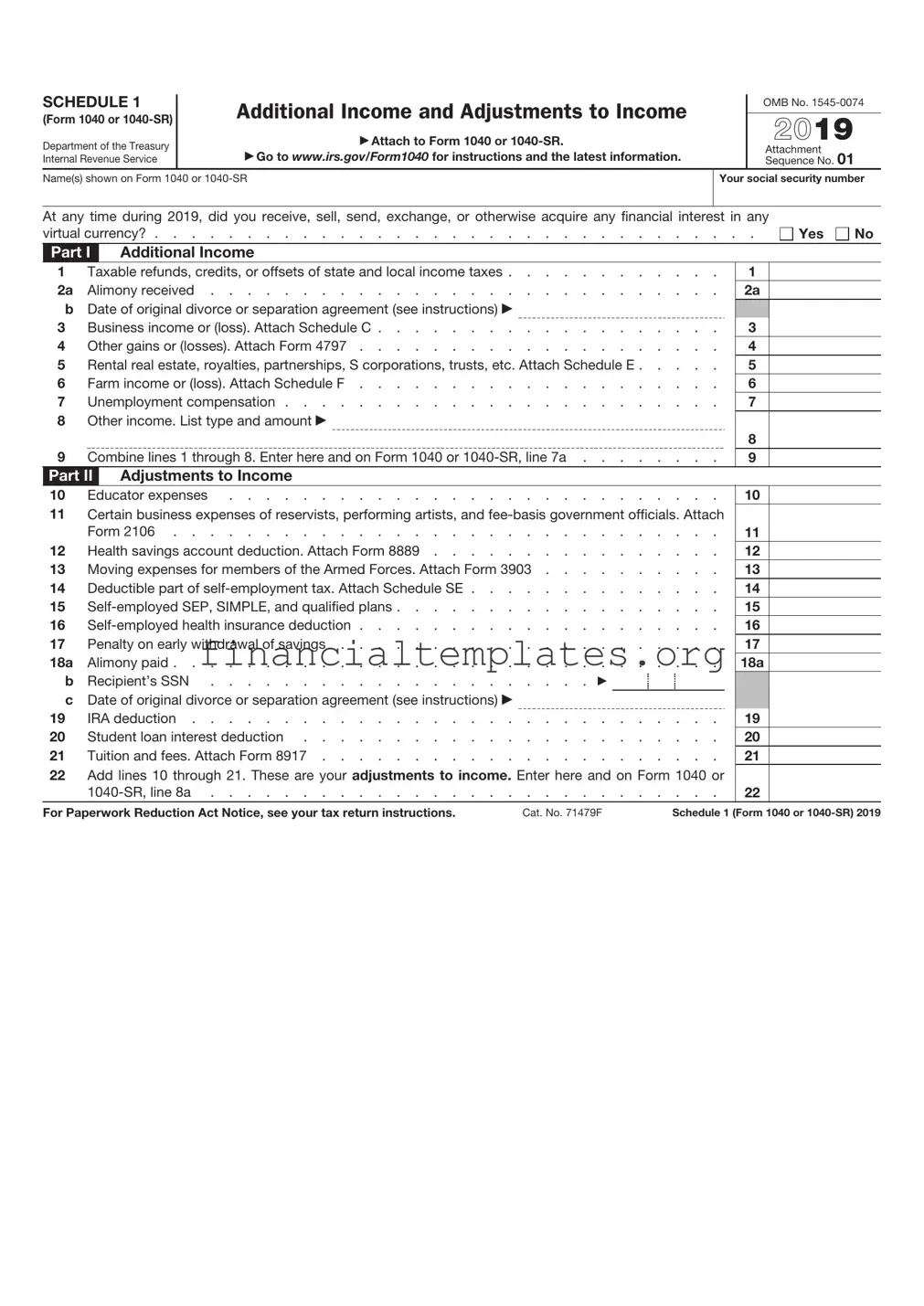11 Educator expenses . . . . . . . . . . . . . . . . . . . . . . . . . .
12Certain business expenses of reservists, performing artists, and fee-basis government
officials. Attach Form 2106 . . . . . . . . . . . . . . . . . . . . . . .
13 Health savings account deduction. Attach Form 8889 . . . . . . . . . . . .
14Moving expenses for members of the Armed Forces. Attach Form 3903 . . . . .
15 Deductible part of self-employment tax. Attach Schedule SE . . . . . . . . .
16Self-employed SEP, SIMPLE, and qualified plans . . . . . . . . . . . . . .
17Self-employed health insurance deduction . . . . . . . . . . . . . . . . .
18 |
Penalty on early withdrawal of savings |
19a |
Alimony paid |
b |
Recipient’s SSN . . . . . . . . . . . . . . . . . . . . ▶ |
|
cDate of original divorce or separation agreement (see instructions) ▶
20 |
IRA deduction |
21 |
Student loan interest deduction |
22 |
Reserved for future use |
23 |
Archer MSA deduction |
24Other adjustments:
a Jury duty pay (see instructions) . . . . . . . . . . . . . 24a
bDeductible expenses related to income reported on line 8k from
the rental of personal property engaged in for profit . . . . . 24b
cNontaxable amount of the value of Olympic and Paralympic
medals and USOC prize money reported on line 8l |
24c |
d Reforestation amortization and expenses |
24d |
eRepayment of supplemental unemployment benefits under the
Trade Act of 1974 . . . . . . . . . . . . . . . . . . . 24e
fContributions to section 501(c)(18)(D) pension plans . . . . . 24f
g |
Contributions by certain chaplains to section 403(b) plans . . |
24g |
h |
Attorney fees and court costs for actions involving certain |
|
|
unlawful discrimination claims (see instructions) |
24h |
iAttorney fees and court costs you paid in connection with an award from the IRS for information you provided that helped the
IRS detect tax law violations |
24i |
j Housing deduction from Form 2555 |
24j |
kExcess deductions of section 67(e) expenses from Schedule K-1
(Form 1041) . . . . . . . . . . . . . . . . . . . . . 24k
zOther adjustments. List type and amount ▶
24z
25Total other adjustments. Add lines 24a through 24z . . . . . . . . . . . . .
26Add lines 11 through 23 and 25. These are your adjustments to income. Enter here and on Form 1040 or 1040-SR, line 10, or Form 1040-NR, line 10a . . . . .



